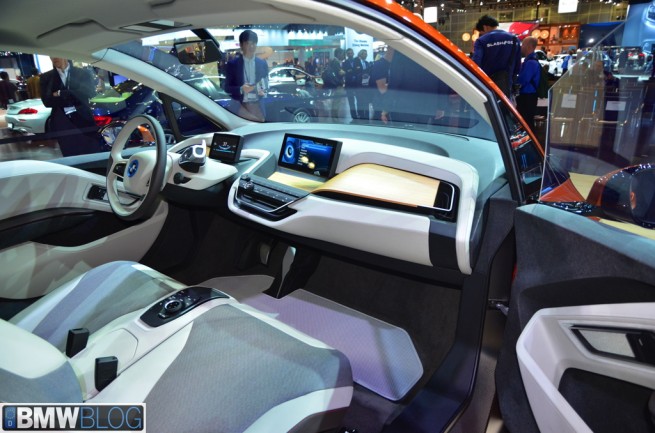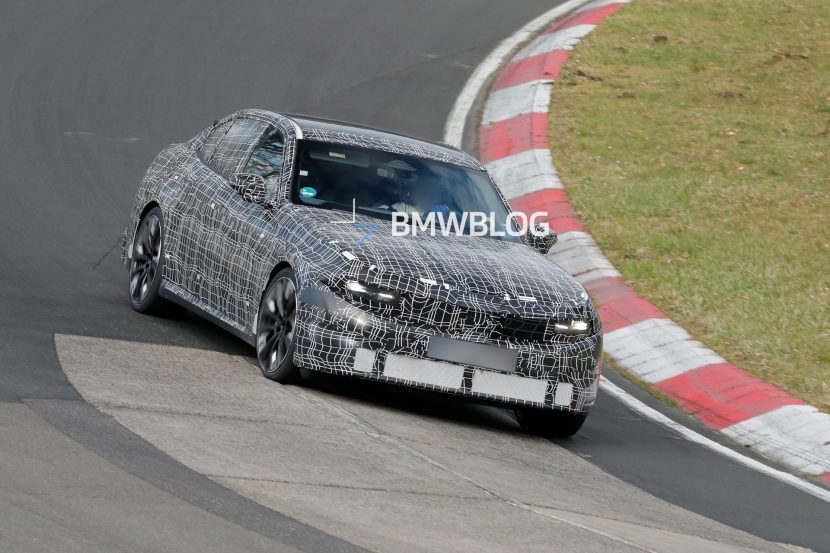Now that BMW has finally answered the question people have been asking for over two years now since the Megacity vehicle was first announced, some may be wondering if this small “city car” is worth it?
Full disclosure: I’ve been in BMW’s e-mobility trial lease program for over four years now and have been driving BMW’s electric test cars (MINI-E and ActiveE) – and paying BMW for the privilege to do so. I have also been maintaining a BMW i3 blog (http://bmwi3.blogspot.com) and keeping it fresh with every morsel of BMW i3 news that was available. So while I may not be the most impartial reviewer, I am intimately knowledgeable with most aspects of the car and the materials used and even the manufacturing process BMW will be employing.
So is the price tag of $41,350 worth it? Yes, absolutely and here are the reasons why:
Superior, futuristic construction
The BMW i3 really isn’t like any other car on the road. It’s the world’s first volume passenger car that makes such extensive use of aluminum and a passenger cell made entirely from carbon. The Life-Drive architecture is made up of the drive module which is nearly all aluminum and uses no subframes as the electric motor is bolted directly to the chassis. The Life (passenger) module is made up of a CFRP passenger shell with injection-molded thermoplastic panels for the outer skin. These panels will resist damage, dents and will never rust.
In fact with an all aluminum frame, CFRP body and thermoplastic body panels the i3 will likely last much longer than a conventionally produced vehicle. The two modules are bolted and glued together and create an extremely stiff structure. The CFRP body is so strong BMW was able to eliminate the need for a B-pillar and still have excellent crash test results. All this makes the i3 an incredibly light 2,630lbs and with a perfect 50/50 weight distribution and a 168hp, 184 lb-ft electric motor powering the rear wheels, the i3 should be as fun as it is efficient. Let’s face it, if it’s not fun to drive then it’s just not a BMW.
No comparable competition
The i3 hasn’t had its official EPA range rating yet, but BMW has been saying it will have 80-100 miles of range in normal driving and you can add up to an additional 24 miles by using the Eco Pro+ driving mode. If true, the i3 will have the best all electric range of any series production electric car available other than the Tesla Model S.
However the least expensive Model S has a starting price that’s nearly $30,000 more than an i3 ($71,070) so these cars aren’t in the same class shouldn’t be compared. If the i3’s range isn’t sufficient for you BMW will offer an optional gasoline range extender which will likely be very popular, especially with first time EV buyers. All this means the i3 will not only have the longest electric range of any EV in its class, but it will also be the only EV on the market with an optional range extender. Its 0-60 time of seven seconds flat will also make it the fastest EV in the class.
Next Generation Electronics
The i3 will have a “Driving Range Assistant” which will alert the driver if the destination they have selected in the navigation system is beyond the vehicle’s range. If so it will suggest switching to ECO PRO or ECO PRO+ mode to extend the cars range. If that’s not enough, it will find a more efficient alternative route for the driver to take. If that still isn’t enough and the battery has to be recharged, it will display all of the public charging stations that are within reach, and route you to the one of your choice. The estimated range display will take into consideration variables like the driving style, amount of electric accessories being used, the selected driving mode, the route’s topography, current traffic levels and the outside temperature.
These factors are all very important and influence an electric vehicles range. There are no other electric vehicles available that use all this information to calculate the vehicles range. If this system works as advertised, it will be an extraordinary advantage for the i3. One of the most criticized features of today’s electric cars is the range estimator, which is frequently not very accurate and is even called the “Guess-o-Meter” on many EVs. The i3 will also offer options like:
Active Cruise Control: Adaptive cruise, including a Stop & Go function that can brake at up to the car’s full braking force, down to 0 mph and back up to highway speed.
Traffic Jam Assistant: This lets the car pull away from a stop, steer itself, and apply the brake in speeds under 30mph
Parking Assistant: A fully automated parallel parking system that controls the cars steering, the accelerator and the brakes.
Speed Limit Display: This will display the current speed limit on the road you are traveling. Can’t find a speed limit sign? No problem, it displays it for you.
Note: Okay, so some these electronics will be optional and will add to the cost, but having them available is certainly worth mentioning because these features are not even available on other EV, and add to it the i3’s uniqueness and next-generation abilities.
Focus on efficiency without compromising driving pleasure
BMW went to great lengths to make the i3 as lightweight and efficient as possible but also made it rear-wheel drive and gave it a powerful electric motor. This will allow to have the great driving dynamics expected from a BMW and also be the most efficient production car available. Not only will it be the fastest EV in its class, but it will also likely boast the highest efficiency figure of any car on the road.
The skateboard body-on-frame architecture put the heaviest component of the vehicle, the battery at the lowest point of the car, below the passenger compartment. The wheels are located as close to the four corners of the car as possible giving it an especially wide stance. The result has brought praise from most journalists that has test driven one so far. The combination of a great driving experience and extraordinary efficiency should set a new standard for electric vehicles in this class.
At $41,350 it’s not an inexpensive car. Plus, like most BMW’s the majority of buyers will likely add $5,000 to $10,000 worth of options. The good news is there is a $7,500 Federal Tax credit in the U.S. that most people will fully qualify for. That’s not a deduction, it’s the full $7,500 taken off your tax liability so most people that buy an i3 can load it up with options and still have an effective cost in the low 40’s.
If you lease it you get the $7,500 as a capital cost reduction built right into the lease price regardless of your tax liability. Plus some states like California offer an additional $2,500 Clean Vehicle rebate, and other states like New Jersey offer a sales tax exemption on zero emission vehicles bringing the effective cost down even more.
Whether a vehicle is “worth it” or not is an entirely subjective matter. I suspect many people will look at the i3 and say “Why would I want one of them when I could buy a 328i for the same price?” People buy cars for all kinds of reasons. It’s not a logical decision, it’s an emotional decision. It’s not really fair to look at the price and compare it to what gas cars you could buy for that money. This is new, cutting edge technology and it’s going to cost more, there’s no way around that. However for individuals looking for a premium electric vehicle under $50,000, the i3 looks like it’s going to be the best in class – hands down.
Read more BMW i3 news at http://bmwi3.blogspot.com






































































